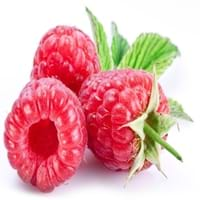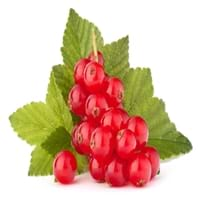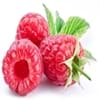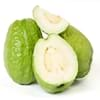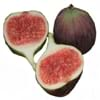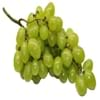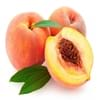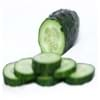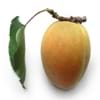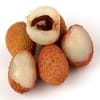रास्पबेरी और रेड कर्रान्त
लाभ
स्वास्थ्य सुविधाएं
कैंसर की रोकथाम, हार्ट को स्वस्थ्य रखता है, धब्बेदार अध: पतन रोकता, रक्त परिसंचरण समस्याओं को कम कर देता है
कैंसर की रोकथाम, गठिया उपचार, हार्ट को स्वस्थ्य रखता है, दिल की दर को नियंत्रण में रखता है, गठिया के उपचार
सामान्य लाभ
सूजन को काम करने के लिए, रक्त शर्करा के स्तर को नियंत्रित करता है, पाचन सहायता, आंख की देखभाल, वजन घटाने में मदद करता
एंटी ऑक्सीडेंट गुण, रक्तचाप को नियंत्रित करता है, बुखार मे मदद करता है, पाचन सहायता, घावों के उपचार, वजन घटाने में मदद करता, हड्डियों को मजबूत
त्वचा पे लाभ
बुढ़ापे मै लाभ, रंग हल्का कर देता है
रंग हल्का कर देता है, झुर्रियों को कम कर देता है, मुँहासे के इलाज
बालों पे लाभ
मॉइस्चराइजर के रूप में उपयोग, बालों का बड़ना नियंत्रित करता है, चमकदार बाल
बालों की सुरक्षा
एलर्जी
एलर्जी के लक्षण
साँस लेने में कठिनाई, खुजली, हीव्स, खुजली, नाक बंद, बहती नाक, छींक आना, गीली आखें, घरघराहट
असामान्य रूप से तेजी से दिल की दर, तीव्रग्राहिता, साँस लेने में कठिनाई, हीव्स, खुजली, निगलने मे कठिनाइ
दुष्प्रभाव
एलर्जी की प्रतिक्रिया
गर्भावस्था के दौरान संभवत: असुरक्षित
उपयुक्त है
गर्भवती महिला
Yes
Yes
स्तनपान कराने वाली महिलाएं
Yes
Yes
खाने का अच्छा समय
नाश्ता (या खाली पेट) के रूप में लिए जाने के लिए उपयुक्त, दोपहर में एक नाश्ते के रूप में, भोजन के बाद ना खाए, सुबह के समय (दोपहर का भोजन करने से पहले)
नाश्ता (या खाली पेट) के रूप में लिए जाने के लिए उपयुक्त, दोपहर में एक नाश्ते के रूप में, भोजन के बाद ना खाए, सुबह के समय (दोपहर का भोजन करने से पहले)
पोषण
सेवन मात्रा
१०० ग्राम
१०० ग्राम
कार्बोहाइड्रेट
11.94 ग्राम
99+
13.80 ग्राम
34
रेशा
6.50 ग्राम
6
4.30 ग्राम
13
चीनी
4.42 ग्राम
99+
7.37 ग्राम
40
प्रोटीन
1.20 ग्राम
19
1.40 ग्राम
16
कार्बोहाइड्रेट मे अनुपात में प्रोटीन
0.10
15
0.10
15
विटामिन
विटामिन ए (रेट्नोल)
2.00 माइक्रोग्राम
33
2.00 माइक्रोग्राम
33
विटामिन बी 1 (थायमिन)
0.03 मिलीग्राम
30
0.04 मिलीग्राम
24
विटामिन बी 2 (राइबोफ्लेविन)
0.04 मिलीग्राम
24
0.05 मिलीग्राम
20
विटामिन बी 3 (नियासिन)
0.60 मिलीग्राम
26
0.10 मिलीग्राम
99+
विटामिन बी 5 (पैंटोथैनिक एसिड)
0.33 मिलीग्राम
11
0.06 मिलीग्राम
99+
विटामिन बी -6 (पाइरियोडॉक्सिन)
0.06 मिलीग्राम
32
0.07 मिलीग्राम
24
विटामिन B9 (फोलिक एसिड)
21.00 माइक्रोग्राम
13
8.00 माइक्रोग्राम
27
विटामिन सी (एस्कॉर्बिक एसिड)
26.20 मिलीग्राम
35
41.00 मिलीग्राम
20
विटामिन ई (टोकोफेरोल)
0.87 मिलीग्राम
12
0.10 मिलीग्राम
37
विटामिन (फ़्यल्लोचिनोने)
7.80 माइक्रोग्राम
10
11.00 माइक्रोग्राम
8
लाइकोपीन
0.00 माइक्रोग्राम
9
0.00 माइक्रोग्राम
9
ल्यूटिन और ज़ेआक्शंतहीं
136.00 माइक्रोग्राम
7
47.00 माइक्रोग्राम
22
चोलिने
12.30 माइक्रोग्राम
3
7.60 माइक्रोग्राम
13
वसा
0.65 ग्राम
12
0.20 ग्राम
33
खनिज पदार्थ
पोटैशियम
151.00 मिलीग्राम
99+
275.00 मिलीग्राम
22
लोहा
0.69 मिलीग्राम
18
1.00 मिलीग्राम
13
सोडियम
1.00 मिलीग्राम
20
1.00 मिलीग्राम
20
कैल्शियम
25.00 मिलीग्राम
18
33.00 मिलीग्राम
13
मैग्नीशियम
22.00 मिलीग्राम
11
13.00 मिलीग्राम
22
जस्ता
0.42 मिलीग्राम
6
0.23 मिलीग्राम
12
फास्फोरस
29.00 मिलीग्राम
18
44.00 मिलीग्राम
7
मैंगनीज
0.67 मिलीग्राम
5
0.19 मिलीग्राम
20
तांबा
0.09 मिलीग्राम
24
0.11 मिलीग्राम
20
सेलेनियम
0.20 माइक्रोग्राम
15
0.60 माइक्रोग्राम
10
वसायुक्त अम्ल
ओमेगा -3s
126.00 मिलीग्राम
5
35.00 मिलीग्राम
20
ओमेगा 6s
249.00 मिलीग्राम
7
53.00 मिलीग्राम
31
स्टेरोल
पानी की मात्रा
85.75 ग्राम
35
83.95 ग्राम
99+
राख
0.46 ग्राम
29
0.66 ग्राम
17
कैलोरी
आहार की मात्रा
१०० ग्राम
१०० ग्राम
छिलका के साथ ताजा फल में कैलोरी
53.00 किलो कैलोरी
21
56.00 किलो कैलोरी
20
छिलका के बिना ताजा फल में कैलोरी
उपलब्ध नहीं है
उपलब्ध नहीं है
जमे हुए फार्म में कैलोरी
52.00 किलो कैलोरी
13
उपलब्ध नहीं है
सूखे रूप में कैलोरी
363.00 किलो कैलोरी
9
308.00 किलो कैलोरी
16
डिब्बाबंद रूप में कैलोरी
91.00 किलो कैलोरी
8
उपलब्ध नहीं है
खानो मैं कैलोरी
रस में कैलोरी
68.00 किलो कैलोरी
18
70.00 किलो कैलोरी
17
जाम में कैलोरी
150.00 किलो कैलोरी
33
165.00 किलो कैलोरी
31
पाई में कैलोरी
169.00 किलो कैलोरी
99+
260.00 किलो कैलोरी
32
विशेषताएँ
प्रकार
बेरी
बेरी
परिपक्व ऋतु
गर्मी
गर्मी
किस्मों
आमिटी, ऑगस्ट रेड, बाय्न, कंबी, केरोलाइन, कॉमेट, दीनकुम, डॉर्मन रेड, लॅतम, मीकेर, ब्लॅक हॉक, हयदा, लॉरन, मीकेर और लॅतम
रोवदा, स्टॅन्ज़ा, रेड लेक, जुनिफेर और जॉनखीर वन तेट्स
बीजरहित वैराइटी
No
No
रंग
काली, बैंगनी, लाल, पीला
लाल
अंदर का रंग
गुलाबी
लाल
आकार
चोटीदार
गोल
बनावट
रसीला
रसीला
स्वाद
मीठा
खट्टा, तीखा
मूल देश
यूरोप, उत्तरी एशिया
यूरोप
पर बढ़ता है
पेड़
पेड़
खेती
मिट्टी के प्रकार
रेतीली दोमट
नम, अच्छी तरह से सूखा
मृदा पीएच
5.8-6.5
6-7
वातावरण की परिस्थितियाँ
सर्दी
सर्दी
तथ्य
के बारे में तथ्य
- रसभरी (रास्पबेरी) के पौधे दो प्रकार के होते हैं।
- बाजार में आज इसका जैम एक लोकप्रिय उत्पाद के रूप में प्रयोग में लाया जा रहा है।
- इसकी २०० से ज्यादा प्रजातियां हैं।
- यह शरीर को एनर्जी देने के लिए सबसे अच्छा स्नैक्स है|
- किशमिश में आयरन, पोटेशियम, कैल्शियम, मैग्नीशियम और फाइबर की भरपूर मात्रा पायी जाती है|
मादक पेय पदार्थों में
वाइन
Yes
Yes
बीयर
Yes
Yes
स्पिरिट्स
Yes
Yes
कॉकटेल
Yes
Yes
उत्पादन
शीर्ष निर्माता
रूस
रूस
दूसरे देश
आज़रबाइजान, कनाडा, मेक्सिको, पोलैंड, सर्बिया, स्पेन, यूक्रेन, यूनाइटेड किंगडम, संयुक्त राज्य अमेरिका
बेल्जियम, फ्रांस, जर्मनी, आयरलैंड, इटली, नीदरलैंड्स, पोलैंड, पुर्तगाल, स्कॉटलैंड, स्पेन, स्वीडन, यूनाइटेड किंगडम
शीर्ष आयातक
संयुक्त राज्य अमेरिका
जर्मनी
शीर्ष निर्यातक
पोलैंड
रूस
वैज्ञानिक नाम
वानस्पतिक नाम
रुबूस इडाइअस
रीबेस रूबरूम
पर्याय
उपलब्ध नहीं है
उपलब्ध नहीं है
श्रेणीविभाजन
डोमेन
यूकेरिया
यूकेरिया
राज्य
प्लाटै
प्लाटै
सुबकिंगडॉम
त्रचेओबेइन्ता
त्रचेओबेइन्ता
विभाजन
माग्नोलियोफायत
माग्नोलियोफायत
क्लास
मग्नोलियोप्सिडा
मग्नोलियोप्सिडा
उपश्रेणी
रोसइदै
रोसइदै
ऑर्डर
रोसलेस
सैक्सीफ्रागाल्स
फॅमिली
रोसासए
ग्रॉस्सुलैरियासै
जाति
रूबस
रीबेस
प्रजाति
र. इडाइअस
र. रूबरूम
जेनेरिक ग्रुप
गुलाब का फूल
सेक्सिफ्रेज
|
||
|
||
|
